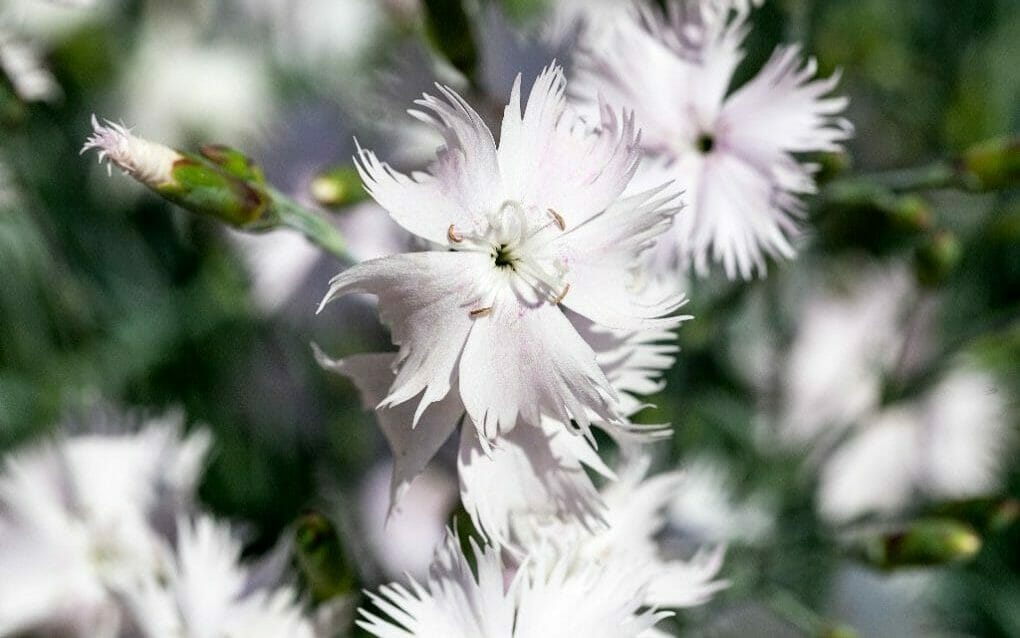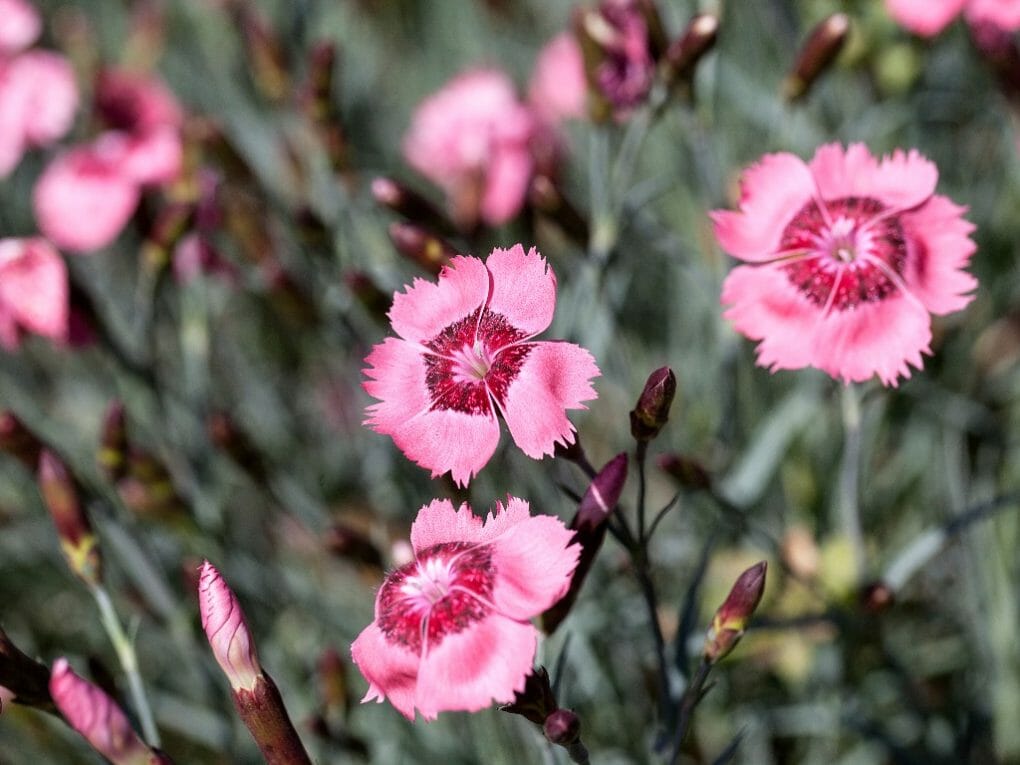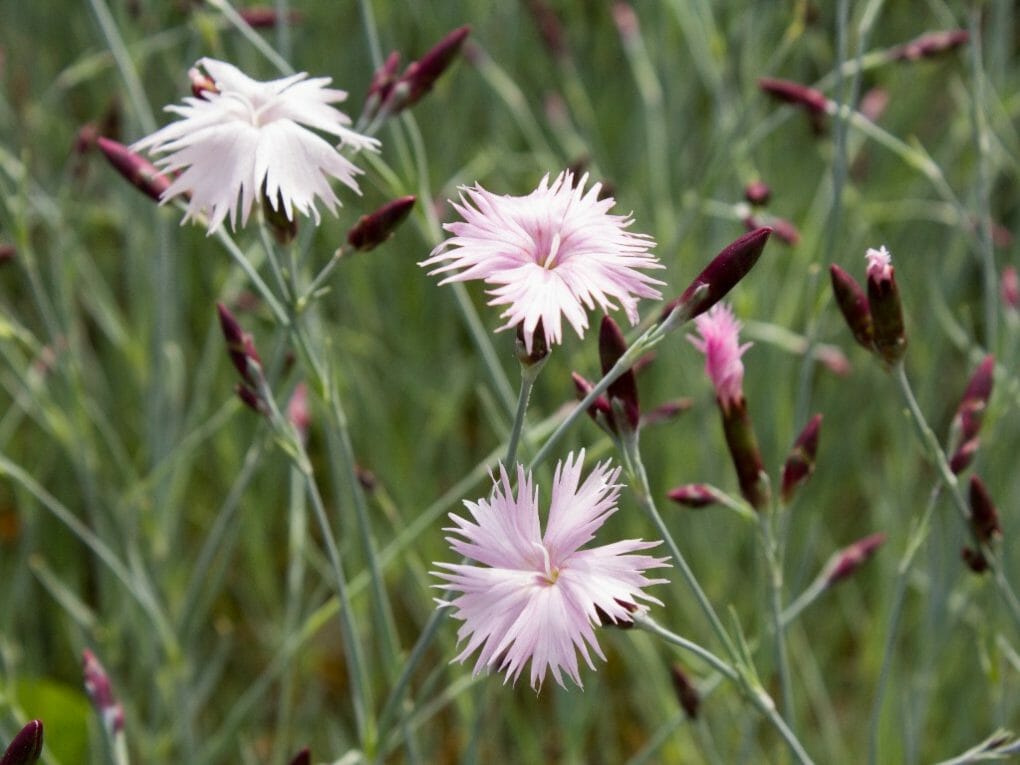How Long Do Carnation Flowers Last? Care Tips for Cut Carnation Blooms

According to Dudla Jyothi, Ph.D. in Life (biological) & Genetics and Heredity, carnations can remain fresh for up to two months in the right conditions. Keep them out of the bright sunshine and away from drafts of chilly air and heat sources such as fireplaces, wood stoves, or forced-air heat vents. Temperatures in the room between 55-65°F are excellent for the longest possible life of cut flowers, as is the case with many types of cut flowers.
Carnations have endured through the ages as cut flowers are considered native to the Mediterranean region. Better Homes & Gardens claims they have been used as cut flowers for at least 2,000 years. Carnations are simple to buy in supermarkets, and their popularity is fueled partly by the fact that they are affordable and readily available all year long. Their tufted blooms can be found in virtually any color you can imagine, and white types can be colored to produce carnation colors that aren’t naturally present in nature, like green and blue.
Table of Contents
Care Tips for Cut Carnation Blooms
Cut a few inches off the stems of carnations or daisies at an angle under running water before placing them in a vase of water to prevent air from penetrating the stems and preventing water absorption. To prevent bacteria from growing, mix a floral preservative into the water. As an alternative, you can accomplish this by including a drop of bleach in the water. The classic combination of flower food, which offers nutrition, and preservatives.
Since tap water may include minerals that can harm cut flowers, it is a good idea to use distilled water when handling them. According to the Floral Design Institute, fluoride added to tap water to promote dental health is harmful to gerbera daisies, while sodium is toxic to carnations.
Every three days, change the water in the vase. When you change the water, trim a half-inch off each stem with a sharp knife. Avoid using scissors to trim the stems of the flowers because they can damage the water-transporting vessels.
Keeping Carnation Alive in Vase

Preparations
As soon as you bring the cut carnations into the house, it would be best to put them in a water-filled vase. Even if you don’t have the time to trim the stems and arrange the flowers straight immediately, you should still put the complete arrangement in a vase with a few inches of water to keep them hydrated until you’re ready to deal with them. This will keep the flowers looking their best. When you are ready to arrange the cut carnations, fill a vase approximately two-thirds of the way with water that is at room temperature. Either empty the flower food packet included in the arrangement into the container or add some of your homemade flower food.
Make an angled cut through the base of the stem of each carnation using garden shears or kitchen scissors that have been scrubbed thoroughly. Because of this, cut carnations have a longer lifespan due to increased surface area for water absorption by the flower. You will need to cut the stems once more during the next several weeks, so try to preserve as much length as possible for the time being in whatever vase or container you are using. Keep the stems long enough that they almost reach the bottom of the vase or container.
Take off all the leaves attached to the stems that will be submerged in the water. This is true for all cut flowers. Underwater leaves break down and give off ethylene, a gas that can speed up the death of cut flowers. This will also prevent the water from becoming hazy and discourage bacteria formation. At this point, you should rearrange the prepared carnations until you are satisfied with how they look. The Floral Design Institute says that decaying leaves can also help bacteria and fungi grow, clogging the stems and making it hard for the flowers to take in water.
Flowers that have been cut shouldn’t be left in temperatures above 75°F (24°C) because they won’t last long. The University of Vermont’s Department of Plant and Soil Science says that carnations and other cut flowers do best when kept at temperatures between 55 and 65 degrees Fahrenheit. They also say that cut flowers should not be kept in direct sunlight or near fireplaces or radiators. Also, it would be best if you stayed away from rooms with cold air drafts.
Keeping It Fresh
Because carnations are resilient, they should not need additional care after they are established. You can maintain their freshness by following the same steps you would take to care for a regular arrangement of flowers. This requires the water to be changed every three days (or earlier if it appears cloudy), and food is added each time for new flowers. Every time you replace the water in the vase, trim the stems by cutting about a quarter of an inch off each one.

Keep in mind that the best method to care for cut flowers is to store them somewhere cool and dark, away from direct sunlight and heat. Place the vase in an area of the room that does not receive a great deal of direct sunlight and is not in the way of any vents used by the heating and cooling system. Keeping cut carnations in the refrigerator will also help to extend their life. Put the bouquet in the refrigerator every night if there is room, but only if there is room.
The Process of Creating Flower Food for Carnations
That secret powder that is included with a bouquet of flower food is not nearly as mysterious as one may think: It is primarily a combination of citric acid (to regulate the pH level of the water), sugar (to sustain the blooms), and bleach (to kill bacteria). If you want your carnations to last as long as possible, feeding them with this flower food should be something you do every time you change the water in their vase. You must learn how to prepare your flower food because most bouquets from retail outlets come with only a single packet.
Replicating the components that go into commercial flower food is one possibility. After the vase has been filled with water, around a tablespoon’s worth of sugar, two tablespoons’ worth of lemon juice, and a half teaspoon’s worth of bleach should be added. If you don’t feel confident handling bleach, there’s no need to use it.
Another choice is to use a suitable product containing citric acid and sugar, such as regular lemon-lime soda. Add approximately a quarter cup when you change the water in the container. The addition of a half teaspoon of bleach is again voluntary.
